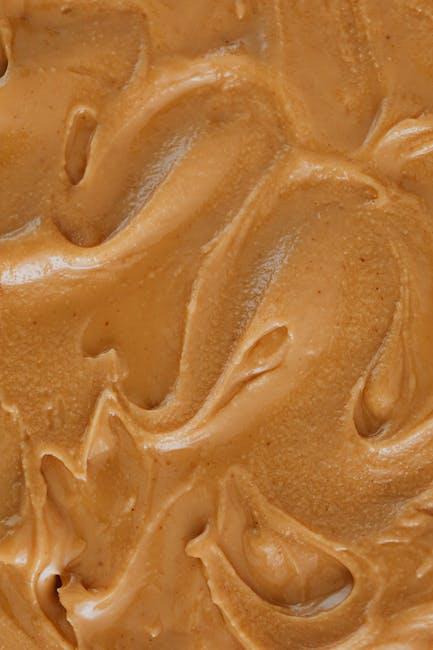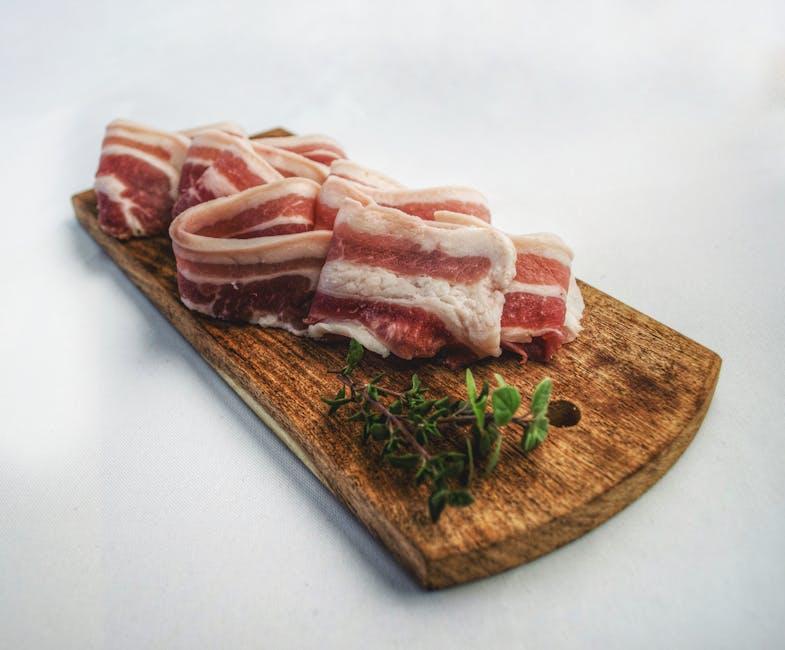Belly fat is often the most stubborn—and frustrating—area to trim down. For years, I struggled with endless diets and workouts that barely made a difference around my midsection. Then, I discovered the ketogenic diet, a low-carb, high-fat approach that not only transformed my eating habits but also reshaped my body. In this article, I’ll take you through my personal journey of how embracing keto helped me lose belly fat, shedding more than just pounds along the way. Whether you’re curious about keto or searching for a new strategy to tackle stubborn fat, my story might offer insights and inspiration for your own transformation.
Table of Contents
- Understanding the Science Behind Keto and Belly Fat Reduction
- Crafting a Personalized Keto Meal Plan for Sustainable Results
- Incorporating Effective Workouts to Enhance Fat Loss
- Tracking Progress: Tools and Tips to Stay Motivated
- Overcoming Common Challenges on the Keto Journey
- Q&A
- To Conclude

Understanding the Science Behind Keto and Belly Fat Reduction
When following a ketogenic lifestyle, the body undergoes a fascinating transformation at the cellular level. Instead of relying on glucose derived from carbohydrates for energy, your metabolism shifts to burning fat as its primary fuel source—a state known as ketosis. This metabolic switch triggers the liver to convert fatty acids into ketones, which then serve as an efficient and sustainable energy provider. This adaptation is particularly effective at targeting stubborn belly fat, because visceral fat stores are more metabolically active and responsive to fat oxidation compared to other fat deposits.
Here’s a simplified look at what happens in your body:
- Lower insulin levels: Reduced carbs lead to a drop in insulin, a hormone that promotes fat storage, making it easier for your body to shed fat.
- Increased fat burning: With ketones as an alternate energy source, fat tissue, especially around the abdomen, is mobilized and broken down.
- Appetite regulation: Ketones help suppress hunger hormones, reducing cravings and overall calorie intake.
| Factor | Effect on Belly Fat |
|---|---|
| Reduced Carbohydrates | Lower insulin -> less fat storage |
| Ketone Production | Enhanced fat breakdown |
| Appetite Hormones | Decreased hunger, reduced calorie intake |
Crafting a Personalized Keto Meal Plan for Sustainable Results
Designing a keto meal plan tailored specifically to your preferences and lifestyle isn’t just about cutting carbs—it’s about nurturing your body with the right balance of fats, proteins, and micronutrients to fuel lasting fat loss. The key lies in embracing foods that excite your palate while maintaining ketosis, which means focusing on quality ingredients like grass-fed meats, avocado, nuts, and low-carb vegetables. By prioritizing variety and nutrient density, you ensure your body gets all it needs without feeling deprived or bored.
Here’s a simplified guideline to customize your plan:
- Determine your macros: Calculate fat, protein, and carb needs based on your personal goals.
- Choose keto-friendly staples: Include items like olive oil, eggs, leafy greens, and full-fat dairy.
- Incorporate intermittent fasting: Align eating windows that support your energy levels and fat-burning rhythm.
- Track and adjust: Monitor how your body responds and tweak your meal portions accordingly.
| Meal | Example | Key Keto Benefit |
|---|---|---|
| Breakfast | Spinach & feta omelette cooked in butter | High in healthy fats, sustained energy |
| Lunch | Grilled salmon with avocado salad | Rich omega-3s and fiber |
| Dinner | Roasted chicken thighs with steamed broccoli | Protein-packed with low carbs |
| Snack | Almonds or cheese cubes | Fat source to curb hunger |
Incorporating Effective Workouts to Enhance Fat Loss
To accelerate fat loss while on keto, integrating a mix of both resistance training and high-intensity interval training (HIIT) can make a significant difference. Resistance exercises help preserve lean muscle mass, which is crucial for maintaining a high metabolic rate during fat loss phases. Meanwhile, HIIT workouts boost your calorie burn during and after exercise by keeping your metabolism elevated for hours. Emphasizing short, intense bursts combined with periods of rest taps into fat stores efficiently without compromising energy levels on a low-carb regimen.
Consistency and variety also play key roles in optimizing results. Switching between weightlifting, circuit training, and cardio intervals not only prevents plateaus but also keeps workouts engaging. Below is a simple weekly workout example tailored for keto enthusiasts:
| Day | Workout Type | Focus |
|---|---|---|
| Monday | Resistance Training | Full-body strength |
| Wednesday | HIIT | Fat-burning intervals |
| Friday | Circuit Training | Muscle endurance + cardio |
| Sunday | Active Recovery | Light walking or yoga |
Tracking Progress: Tools and Tips to Stay Motivated
Consistency is key when embarking on any weight loss journey, and keeping track of your progress can be a game-changer. I found that using a combination of digital and physical tools helped me stay on target effortlessly. Fitness apps like MyFitnessPal allowed me to log meals and monitor macros, while simple handwritten journals kept me grounded. Measuring progress beyond the scale with photos, body measurements, and how clothes fit gave me a more comprehensive picture of success. Small weekly check-ins helped transform overwhelming goals into manageable, motivating milestones.
To maintain momentum, integrating a few practical tips was essential. I created a habit of setting realistic weekly goals and celebrating small wins to avoid discouragement. Surrounding myself with a supportive community, whether through online keto forums or local groups, provided accountability and encouragement. Here’s a snapshot of my favorite trackers that helped me stay motivated:
| Tool | Purpose | Benefit |
|---|---|---|
| MyFitnessPal | Macro and calorie tracking | Helps maintain keto ratio consistency |
| Body Tape Measure | Track inches lost | Visual progress beyond weight scale |
| Progress Photos | Visual diary | Boosts motivation by seeing changes |
| Keto Forums | Community support | Encouragement and shared tips |
Overcoming Common Challenges on the Keto Journey
Embarking on the keto path was not without its hurdles. One of the most persistent challenges was managing the infamous “keto flu,” a group of symptoms like fatigue, headaches, and irritability that occur during the initial shift into ketosis. I found that hydration, electrolyte balance, and patience were my strongest allies. Increasing water intake alone wasn’t enough — supplementing with magnesium, potassium, and sodium helped smooth out the transition. Listening to my body and adjusting macronutrients accordingly made a significant difference, transforming a daunting phase into a manageable one.
Another obstacle was navigating social settings and food cravings. Keto-friendly options are not always readily available, which can feel isolating or limiting. To overcome this, I prepared portable snacks and researched menus ahead of time. Building a support system also helped, as I connected with others who shared similar goals and challenges. Here’s a quick rundown of strategies that kept me on track:
- Meal prep: Planning meals to avoid impulsive eating decisions
- Mindful indulgence: Allowing occasional keto-compliant treats curbed cravings without guilt
- Community engagement: Joining forums and local meetups for encouragement and tips
| Challenge | Effective Solution |
|---|---|
| Keto Flu Symptoms | Hydration + Electrolyte supplements |
| Social Eating | Meal prep + Advance menu research |
| Food Cravings | Keto snacks + Mindful indulgence |
| Staying Motivated | Community support + Progress tracking |
Q&A
Q&A: How I Lost Belly Fat with Keto
Q: What inspired you to try the keto diet for losing belly fat?
A: I reached a point where no matter how much I exercised or tried dieting, my belly fat just wouldn’t budge. After hearing so much buzz about keto’s fat-burning benefits, I decided to give it a shot as a last resort to target that stubborn area.
Q: Can you briefly explain what the keto diet involves?
A: Sure! Keto is a low-carb, high-fat diet. The idea is to drastically reduce carbohydrate intake so your body enters a state called ketosis, where it burns fat for energy instead of glucose. This shift helps many people shed fat, particularly around the midsection.
Q: How long did it take before you noticed visible changes in your belly fat?
A: The first noticeable changes appeared within two to three weeks. The belly felt less bloated, and I started to see a subtle tightening. By the one-month mark, the fat on my lower abdomen visibly decreased, which was a huge motivation boost!
Q: Did you experience any challenges while on the keto diet?
A: Absolutely. The first week was tough—often called the “keto flu,” I had headaches, fatigue, and mood swings. Also, sticking to low carbs requires careful planning and sometimes creativity with meals. But once my body adapted, these challenges faded.
Q: What kind of meals did you eat to lose belly fat on keto?
A: I focused on nutrient-rich, keto-friendly foods like avocados, eggs, fatty fish, nuts, and plenty of leafy greens. I avoided sugars, grains, and starchy vegetables. Eating satisfying fats helped me stay full and cut down on cravings.
Q: Did you combine keto with exercise?
A: Yes, I did incorporate regular workouts—mainly strength training and moderate cardio. While keto works wonders alone, exercise accelerated my belly fat loss and improved muscle tone.
Q: Were there any unexpected benefits from doing keto?
A: Definitely! Beyond the belly fat loss, I noticed increased mental clarity, more steady energy throughout the day, and better control over cravings. Keto taught me a lot about mindful eating.
Q: Is keto suitable for everyone who wants to lose belly fat?
A: Keto isn’t a one-size-fits-all solution. It can be highly effective, but some people may find it restrictive or experience side effects. It’s important to consult with a healthcare professional before starting and to listen to your body along the way.
Q: What advice would you give to someone starting keto to lose belly fat?
A: Be patient and stay consistent. Track your carb intake carefully, hydrate well, and don’t get discouraged by initial hurdles. Plan your meals ahead and focus on whole foods. Remember, it’s a lifestyle change, not a quick fix.
Q: Now that you’ve lost belly fat, how do you maintain your results?
A: I maintain a balanced keto-friendly lifestyle, allowing occasional carb re-feeds to keep things sustainable. I continue exercising and prioritize whole, unprocessed foods. Maintaining is about finding harmony, not perfection.
To Conclude
As I close this chapter on my keto journey, the numbers on the scale are more than just digits—they represent a shift in habits, mindset, and self-awareness. Losing belly fat wasn’t about a quick fix or a magic pill; it was about embracing a lifestyle that aligned with my body’s natural rhythms. Keto wasn’t just a diet; it was a catalyst for change. If you’re considering a similar path, remember: every step forward, no matter how small, is progress. Here’s to finding your own balance, one delicious, fat-fueled meal at a time.

